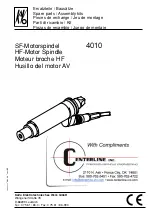
IMPORTANT!! Great care should be observed when
handling lithium-polymer (LiPo) batteries as they
are entirely diff erent than NiCd or NiMH batteries!!
Read all included instructions to ensure the proper operation,
and avoid all possible causes of failure!
These batteries are intended for use with radio controlled models
only. R/C applications vary too greatly to cover every possible use
in these instructions. The user must accept the responsibility to
make smart and safe decisions about their desired application to
avoid possible abuse and misuse. Non-R/C uses are not intended
nor approved.
By purchasing this product you agree that you have read and
understood the safety precautions printed here and on each
product, and agree to bear full responsibility for any injury, loss
or damage resulting from all circumstances surrounding your
use or misuse of this product. You agree not to hold DuraTrax, its
distributors (owners and employees) and/or retailers responsible
for any accidents, injury to persons, or property damage. You
accept the responsibility for inspecting and detecting any signs
of damage or defect before and after use and prior to charging
and to discontinue use immediately if any such issue arises. If you
do not agree to these terms of use, return the item in its original
condition to the place of purchase.
POTENTIAL HAZARDS
When Handling LiPo Batteries
LiPo batteries can be damaged and CATCH FIRE
if overcharged, shorted, damaged physically, or
over-discharged!
■
Over-charging, using an incompatible charger, or charging
a battery that was
previously damaged
either physically or
electrically can result in a catastrophic failure of the battery in
the form of swelling, emission of smoke, and FIRE.
■
Over-discharging a LiPo (to a voltage lower than its rated
minimum voltage) can damage a LiPo internally – even without
the damage being visible in any way. Yet, a catastrophic failure
(FIRE) could occur when attempting to re-charge the battery later.
■
LiPo failures are often a result of
human error
. Reading and
understanding these instructions is CRUCIAL for avoiding
problems, and to ensure personal safety and the protection
of the surroundings.
Glossary – Understanding Terms
PACK: Multiple battery cells connected together electronically
form a pack.
VOLTAGE: A way to rate a battery’s energy
potential
. Individual
LiPo cells have a nominal voltage rating of 3.70V per cell, with a
maximum charge voltage of 4.20V per cell. A pack marked “11.1V”
has a nominal voltage rating of 11.1V, etc. The more cells wired in
series, the higher the voltage. See page 2 for a listing of diff erent
size LiPo packs and voltages.
CAPACITY: A way to rate a battery’s maximum energy
storage limit
,
typically listed in “mAh” (milliamp-hours) and being the amount
of energy the battery can deliver constantly over a period of one
hour. Capacity rating is typically a way to gauge how much run
time a battery can provide. The greater the rated capacity, the
longer the run time.
C-RATING: A multiple of the battery’s capacity rating, calculated
as the battery’s rated milliamp-hours (mAh) divided by 1000.
C-ratings are used to establish various limits for a LiPo battery,
such as a battery’s maximum charge and discharge current values.
A battery rated at 2100mAh (1C = 2.1A) with a maximum charge
rating of 3C could be charged at (2.1A x 3) 6.3 amps. A battery rated
at 3200mAh with a maximum discharge rating of “25C” should be
able to deliver (3.2A x 25) 80 amps of current during discharge.
7.4 V 5000 mAh
7.4 V 5000 mAh
Series Connection:
Example total = 14.8V 5000 mAh
™
™
SERIES PACK CONFIGURATIONS “S”: Electrically connecting
multiple cells
end-to-end
places cells in “series”, with the resulting
total pack voltage being the SUM of all cell voltages. Connecting
packs in series is usually done to deliver more power (torque and/
or speed) to the motor. A 3-series LiPo pack (3S) would have a total
nominal voltage of (3 x 3.7V) 11.1V. A 4S pack has a total nominal
pack voltage of (4 x 3.7V) 14.8V, etc. Connecting two 7.4V batteries
in series will result in an overall voltage of 14.8V. Do not connect
multiple packs together in series unless each has the same rated
capacity (regardless of the rated voltage of each pack).
14.8V 4200 mAh
14.8V 4200 mAh
Parallel Connection:
Example total = 14.8V 8400 mAh
™
™
PARALLEL PACK CONFIGURATIONS “P”: Electrically connecting
multiple cells
side-by-side
places cells in “parallel”, with the resulting
total pack voltage being identical to the rated voltage of each
individual battery (not the sum of all battery voltages). However,
the resulting total CAPACITY is the sum of all battery capacities.
Connecting two 14.8V 4200mAh packs in parallel would result in
a total voltage of 14.8V (same as each pack), but the total capacity
would be 8400 mAh (total of both pack capacities). Connecting
packs in parallel is usually done to lengthen the run-time of the
model. Do not connect packs of diff erent voltage ratings together
in parallel.
DTXC2005
™
®






















